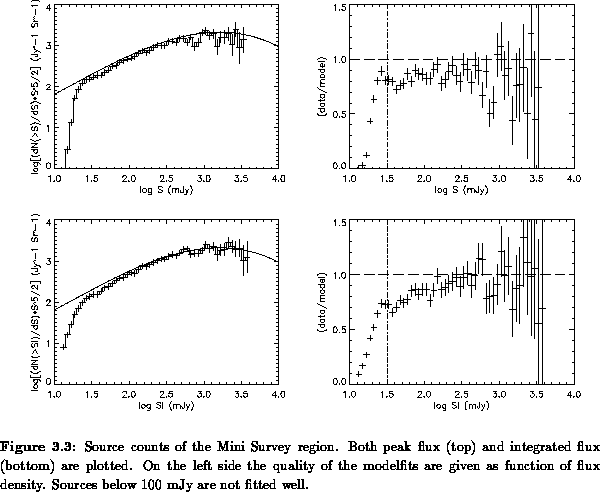One of the first things we have done after we have reduced the maps and the first sourcelist had been made was making plots of source counts. This work was done by Roeland Rengelink. In these plots the sources are put in flux-bins and plotted as a histogram (see plot 3.3). In this plot the solid curve represents the fitted model made by Mark Wieringa (1991) of similar Westerbork fields observed at the same frequency. What is quite clear from these plots is the fact that we don't see as many sources as Wieringa did. This was the second major problem in the survey. Either there are not as many low flux sources in that part of sky or there is a problem in the flux calibration of our survey. If the first option is true, than it would be very interesting, since Wieringa's results agreed within the errorbars with what other people (Katgert-Merkelijn et al. (1985), Windhorst (1948)) had also found in other Westerbork surveys at that particular frequency. If the second option is true than we have a severe problem. This problem is still under investigation (september 1993). A WENSS field which partly covers Wieringa's field has been reduced and send to Leiden. At the moment of writing this section we didn't have an answer what could be wrong with the source counts. In May 1994 we had a hint of what our problem was. See Chapter 7 (Future work about the solution).
